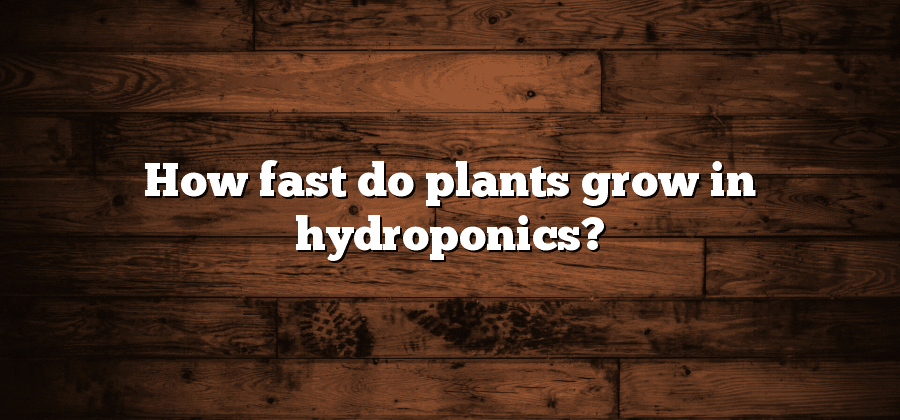Light Intensity and Duration
High light intensity and duration are crucial factors for the successful growth of plants in indoor environments. Plants rely on light for photosynthesis, the process through which they convert light energy into chemical energy to fuel their growth and development. Insufficient light intensity can lead to stunted growth, weak plants, and poor flower or fruit production. Conversely, excessive light intensity can cause leaf burn, bleaching, and other forms of light stress. Thus, it is essential for indoor gardeners to strike the right balance, providing plants with sufficient light intensity and duration to meet their specific requirements.
To determine the optimal light intensity and duration for your indoor garden, you first need to identify the lighting needs of the plant species you are growing. Different plants have varying light requirements, with some species thriving in bright and direct sunlight, while others prefer lower light levels. Consulting plant-specific guides or research literature can help you gain a better understanding of the light requirements for different species. Additionally, investing in a light meter or using smartphone apps that measure light intensity can assist you in accurately measuring the light levels in your grow space.
Nutrient Concentration and Balance
The proper balance of nutrients is essential for the healthy growth of plants. Nutrient concentration refers to the amount of essential elements present in the growing medium, such as nitrogen, phosphorus, and potassium. These nutrients play a vital role in numerous physiological processes, including photosynthesis, root development, and overall plant vigor.
Maintaining the correct nutrient balance is crucial to avoid nutrient deficiencies or toxicities, which can stunt plant growth and reduce crop yields. Too little of a specific nutrient can limit growth and impair the plant’s ability to produce fruits or flowers. On the other hand, excessive concentrations of certain nutrients can lead to nutrient imbalances, hindering nutrient uptake and potentially causing toxicity symptoms. Achieving the right nutrient concentration and balance requires regular monitoring and adjustment based on the specific needs of each plant species, taking into account factors such as growth stage and environmental conditions.
pH Levels and Water Quality
pH Levels and Water Quality are crucial factors to consider when ensuring optimal plant growth and health. pH refers to the acidity or alkalinity of the water and can greatly impact a plant’s ability to absorb nutrients. Different plant species have specific pH preferences, and maintaining the correct pH range is essential for proper nutrient uptake and overall plant development.
Additionally, water quality plays a crucial role in plant growth. Unfiltered or heavily contaminated water can introduce harmful substances and impurities that can harm the plants. These contaminants may include heavy metals, chlorine, pesticides, and pathogens. Therefore, it is imperative to regularly test the water quality and remove any impurities that can affect the health and growth of the plants.
Ultimately, maintaining the appropriate pH levels and ensuring high water quality are vital for promoting optimal plant growth and yield. By regularly monitoring and adjusting these factors, gardeners and farmers can provide a favorable environment for their plants to thrive. Taking the necessary steps to manage pH levels and water quality will help keep plants healthy and robust, leading to successful cultivation and harvest.
Temperature and Humidity Control
Temperature and humidity control are crucial factors in creating an optimal growth environment for plants. Maintaining the right temperature ensures that the plant’s metabolic processes occur at an optimum rate, maximizing growth and development. Additionally, temperature control plays a vital role in preventing diseases and pests from spreading and causing damage to the plants.
Humidity also plays a significant role in the overall health and growth of plants. Proper humidity levels create a balance between moisture loss and absorption through the plant’s stomata. High humidity can lead to fungal diseases and create a breeding ground for pests, while low humidity can cause excessive moisture loss, leading to plant stress and wilting.
Achieving the ideal temperature and humidity levels requires careful monitoring and control. Greenhouses and indoor cultivation facilities often utilize various technologies such as HVAC systems, evaporative coolers, and misting systems to regulate these environmental factors. By maintaining optimal temperature and humidity conditions, growers can ensure healthy plant growth and maximize crop yields.
Plant Species and Varieties
High-quality plants are essential for any successful gardening or landscaping project. Choosing the right plant species and varieties can greatly impact the overall aesthetics and health of your garden. It is crucial to carefully consider the specific requirements of each plant before making a selection. Factors such as sunlight exposure, soil type, and climate conditions should all be taken into account to ensure the plants thrive in their intended environment.
When deciding on plant species, it is important to select varieties that are suited to your region’s climate and growing conditions. Different plants have varying levels of tolerance to temperature extremes or drought. Some species may require specific soil pH levels or nutrient concentrations to flourish, while others may be more adaptable. Researching and consulting with local gardening experts or nurseries can provide valuable insights into which plant species and varieties are best suited for your area. By choosing wisely, you can create a garden that not only looks beautiful but also requires minimal maintenance and can withstand the challenges presented by your local climate.






